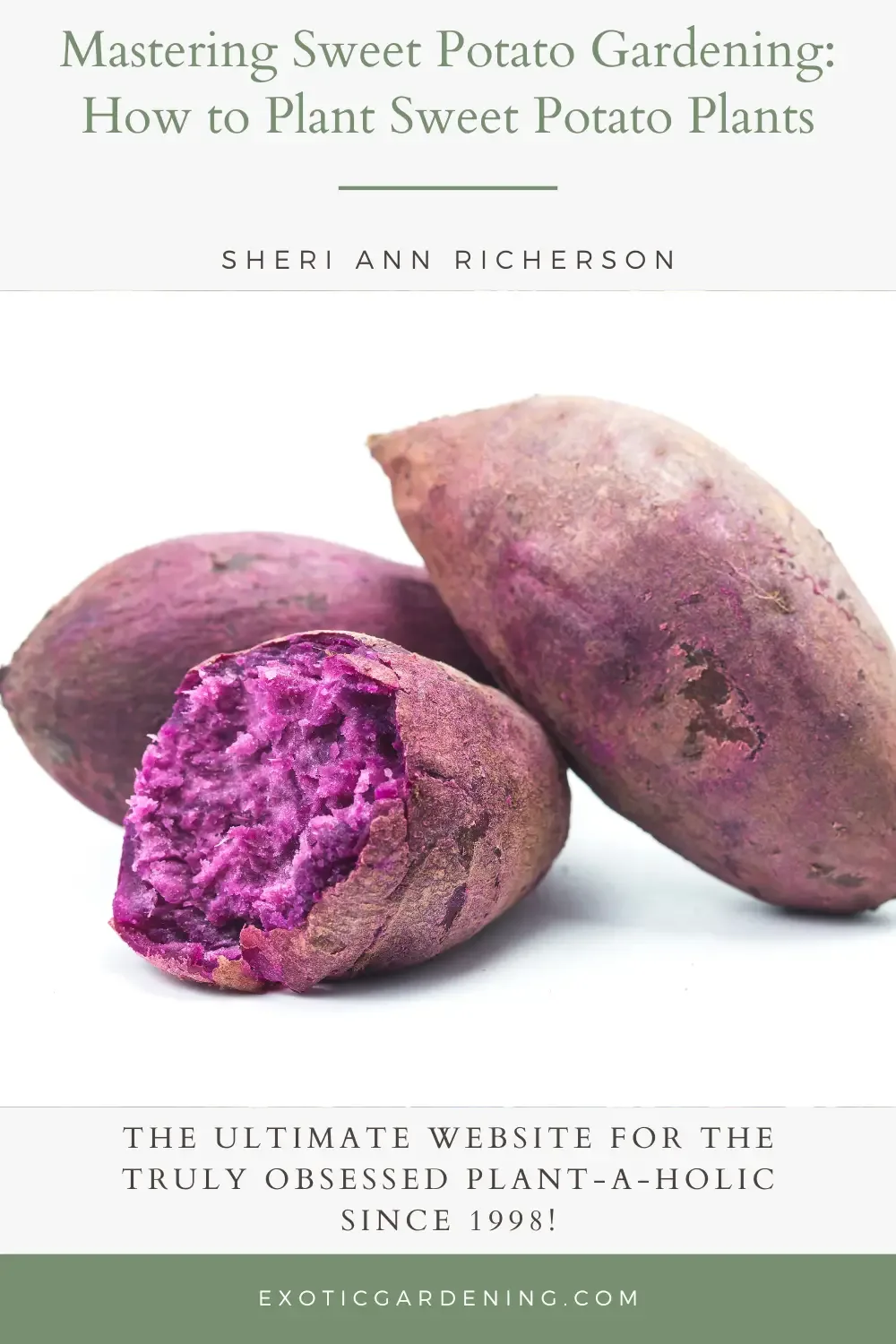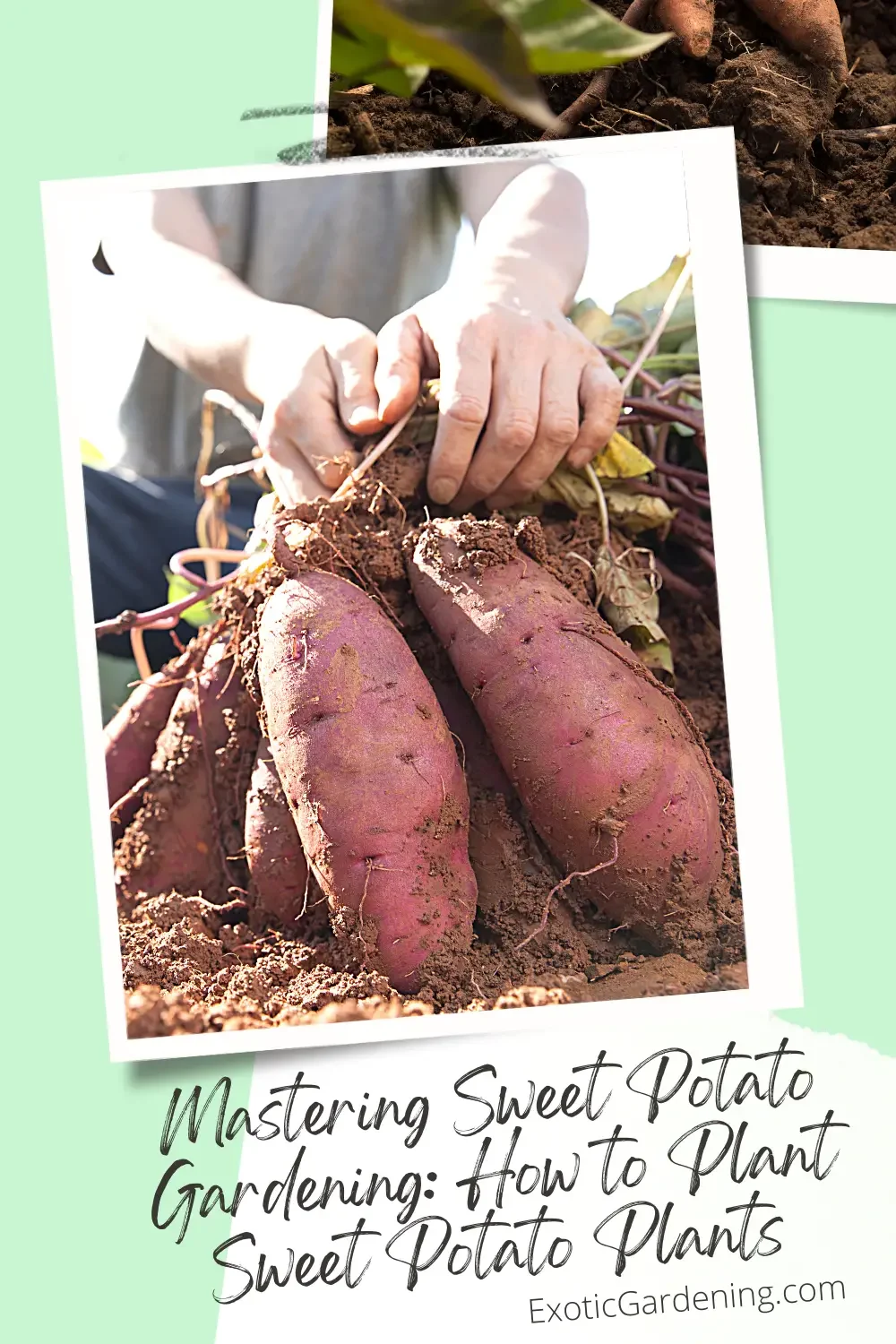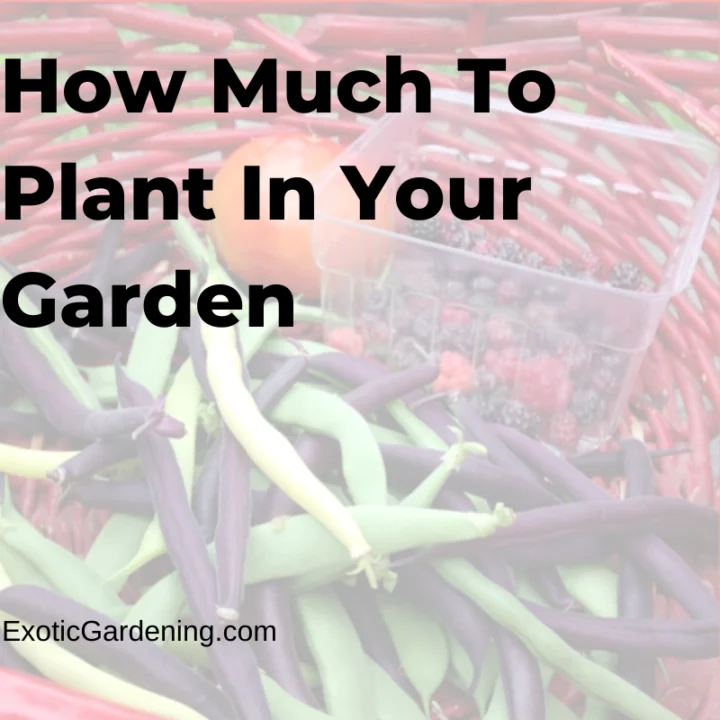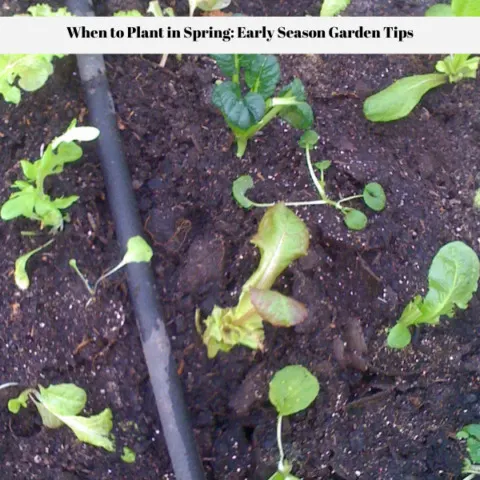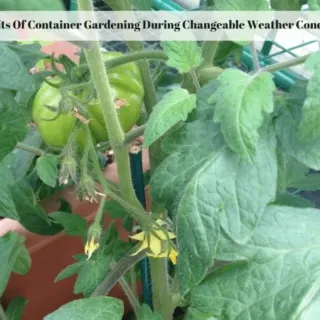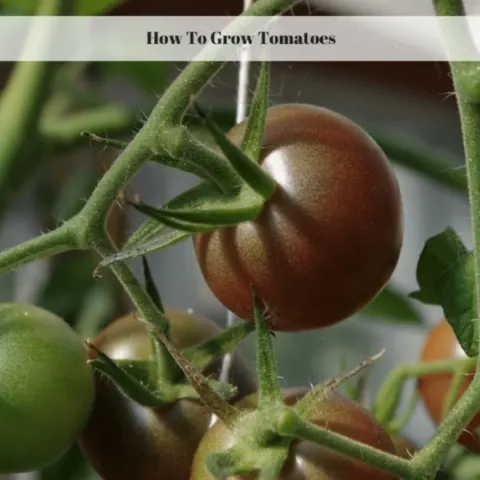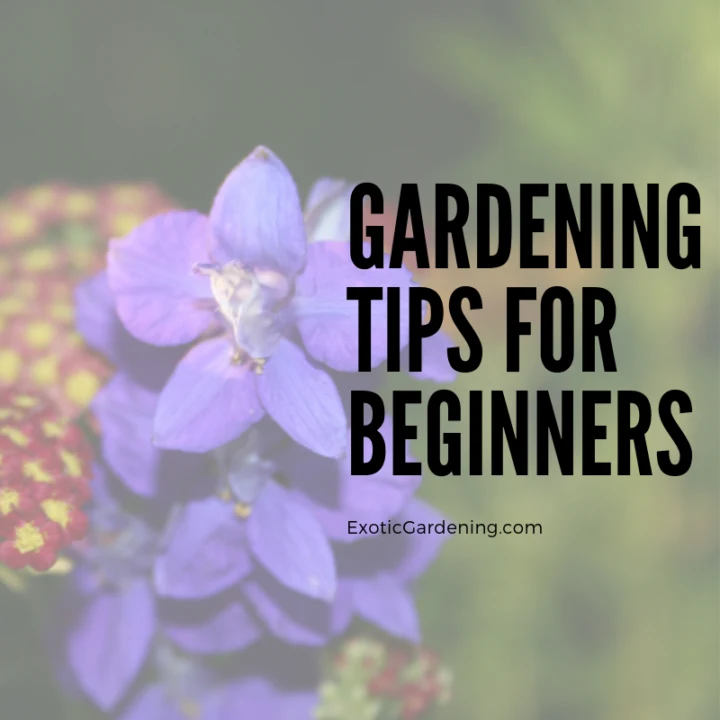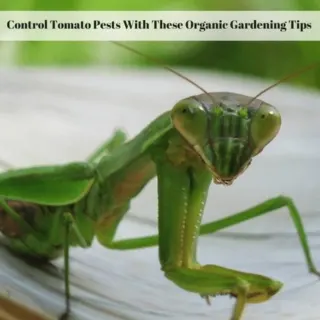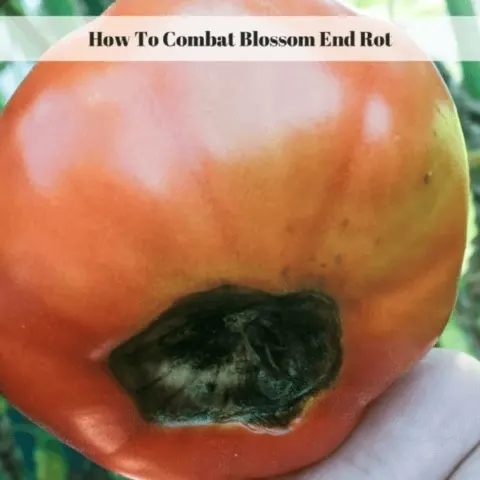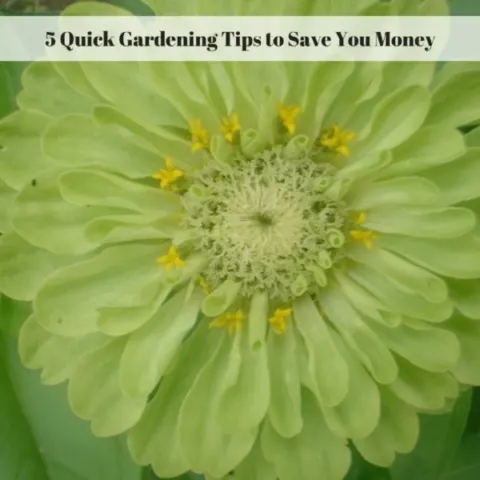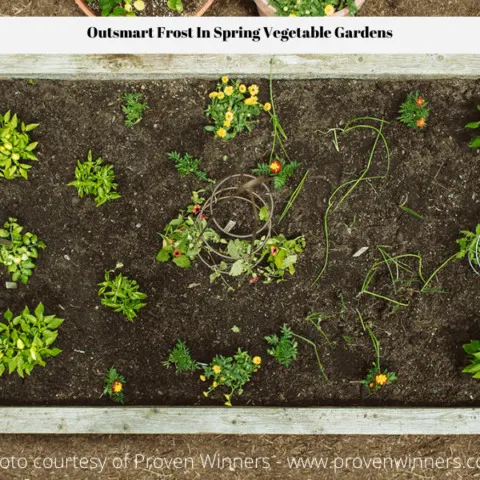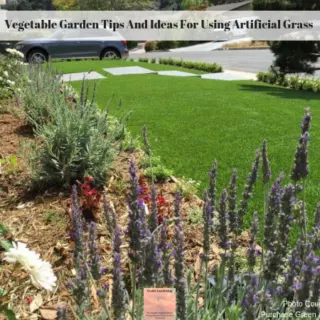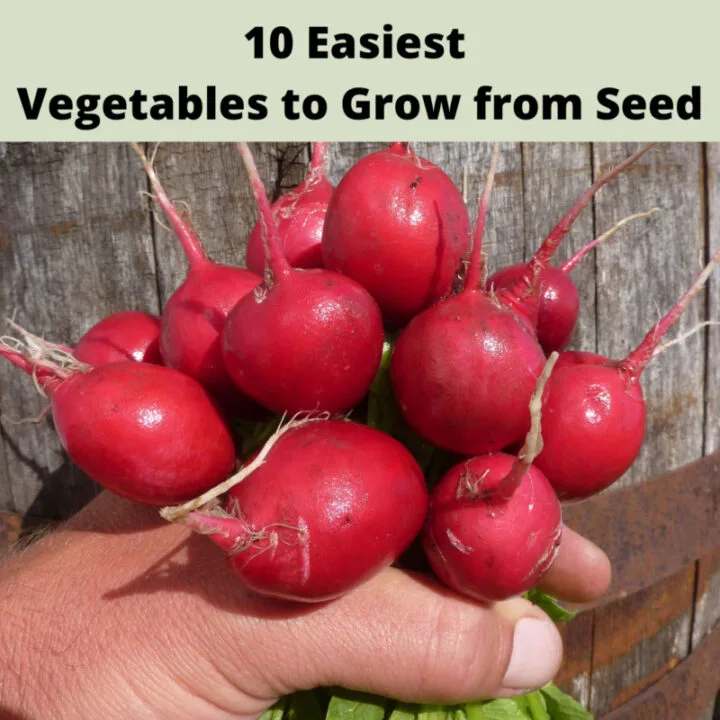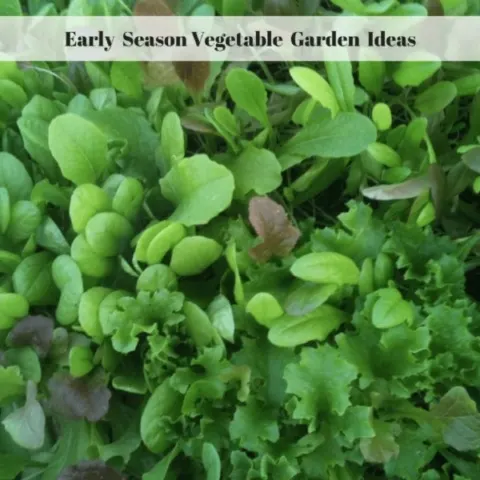How to plant sweet potato plants becomes a thrilling adventure when you embark on the journey of cultivating your own produce.
This endeavor not only satisfies the palate but also brings deep satisfaction to the soul.
Now, let's shine a spotlight on one remarkable player in the realm of self-cultivation—the sweet potato plant.
Packed with nutrition and boasting a quick maturity cycle, this resilient gem is a delightful addition to any garden.
Whether you're a greenhorn gardener or a seasoned pro, gaining a comprehensive understanding of how to plant sweet potato plants is crucial for a thriving harvest.
Dive into the intricacies of their characteristics, growth requirements, and maturity cycle to lay the groundwork for success.
Our exploration kicks off with a deep dive into sweet potato plants, leading seamlessly into the meticulous preparation of the soil.
As we navigate this green journey, you'll master the art of planting sweet potato slips and caring for your growing plants.
Finally, we'll guide you through the perfect timing and method to harvest your sweet potatoes, ensuring a maximum yield that reflects your newfound expertise.
Ready to make your garden burst with sweet success?
Let's start by planting those sweet potato plants!
Exploring Sweet Potato Varieties: A Rainbow on Your Plate
Diving into sweet potato cultivation opens up a world of vibrant varieties, each with its unique flavor and characteristics.
Here's a colorful lineup, and yes, we're talking about those intriguing purple ones too:
- Beauregard: A classic choice for beginners, Beauregard boasts a rich orange flesh and a delightful sweetness. It's known for its reliable yield and consistent performance.
- Jewel: Vibrant orange skin and deep orange flesh characterize Jewel sweet potatoes. Their sweet flavor and versatility in the kitchen make them a popular pick for home growers.
- Covington: With a slightly nutty taste, Covington sweet potatoes have a beautiful orange color and are prized for their high yield. They thrive in various growing conditions, making them a reliable choice.
- Japanese Purple Sweet Potato: Adding a pop of color to your garden, these purple sweet potatoes feature a mildly sweet flavor and a vibrant purple flesh. They're not just visually stunning but also packed with antioxidants.
- Okinawan Purple Sweet Potato: Another gem in the purple category, the Okinawan sweet potato has a distinctive purple skin and flesh. Its sweet taste and health benefits make it a popular choice for both culinary and nutritional reasons.
Remember, choosing the right variety depends on your taste preferences and growing conditions.
Each sweet potato variety brings its own flair to the table, promising a harvest as diverse as the colors of a sunset.
Ready to add a rainbow of flavors to your garden?
Read on to find out how to plant sweet potato plants.
Understanding Sweet Potato Plants
Whether you're a seasoned gardener or a dirt-digging newbie, the allure of sweet potato plants is undeniable.
These veggies are not just tasty and versatile; they're surprisingly easy to grow, even for the greenest of thumbs!
But to truly savor the journey and reap that succulent sweet potato bounty, let's dive into the intricate dance of knowledge, passion, and patience.
- Selecting the Right Sweet Potato Variety: Not all sweet potatoes are created equal! Explore varieties like Beauregard, Centennial, and Jewel—perfect choices for beginners, promising a robust yield with minimal effort.
- Making the Most of Sunlight: Sweet potatoes are sun-worshippers! To ensure a fruitful harvest, find them a sunny spot where they can bask in at least five hours of direct sunlight daily.
- Understanding Soil Needs: Happy plants start with the right soil. Opt for well-draining, sandy soil with a pH between 5.8 and 6.2. Rich in organic matter, it fosters good root development and enhances your yield.
- Watering Patterns: Sweet potatoes can handle drought, but regular watering ensures healthy growth. Aim for moist, not waterlogged, soil to guarantee those beautiful tubers.
- Potential Pests and Diseases: Keep an eye out for wireworms, sweet potato weevils, and root nematodes. Fungal foes like black rot and scurf can also strike. Regular inspections and proactive measures ensure a thriving crop.
- Harvest Time: Patience pays off! Sweet potatoes are ready for harvest in 95 to 120 days. Look for yellowing leaves and vine ends as your cue. Handle with care—sweet potato skins bruise easily!
- Storing and Sharing Your Harvest: After curing for a couple of weeks in warm, humid conditions, your sweet potatoes can be stored for up to 10 months. Share the fruits (or veggies) of your labor with loved ones and spread the gardening joy!
Sweet potato plants may seem humble, but they demand attention, care, and a dash of love.
Embrace the challenge, relish the process, and your results will be the sweet, earthy fruits of your gardening passion.
Preparing Soil for Sweet Potato Planting
Now that we've covered the sweet potato basics—choosing the right variety, understanding their needs, and tackling pests and diseases—it's time to roll up our sleeves and dig into the crucial step of soil preparation.
This stage can truly make or break your sweet potato harvest, so let's get our hands dirty!
- Testing the Soil: Kickstart your sweet potato journey by putting your soil to the test. While sweet potatoes are hardy and can thrive in various soils, they flourish best in well-draining, loamy soil. A soil test kit is your trusty sidekick, revealing the pH level and nutrient content. Sweet potatoes prefer a pH between 5.8 and 6.2, but they can tolerate a range between 5.0 to 7.5. Need to adjust? Lime for low pH, sulfur for high, but always get that soil test first!
- Getting the Texture Right: Sweet potatoes crave loose, well-drained soil for optimal growth. If you're dealing with compact soil like clay, fear not! Incorporate organic matter, such as compost, to improve texture, nutrient content, and drainage. Just don't go overboard with nitrogen-rich organic matter, or you might end up with lush leaves and undersized tubers.
- Tilling the Soil: Grab that shovel! About 2 weeks before planting, till the soil to a depth of 12 inches, then smooth it out with a rake. Clear any rocks, sticks, or potential obstacles to ensure unhindered tuber growth.
- Checking Soil Temperature: Sweet potatoes love the heat, so be patient and wait until the soil consistently hits 65°F (around 2 weeks after the last frost) before planting. If you're in a cooler climate, black plastic mulch or row covers can speed up the soil warming process.
- Fertilizing the Soil: Before planting, consider adding a balanced, slow-release granular fertilizer. Look for a mix higher in phosphorus and potassium, and lower in nitrogen. This encourages robust root growth without an excessive leafy show.
Remember, the effort and patience you invest in preparing your soil are the building blocks of sweet potato success.
Perfect soil conditions take time, trial, and hands-on experience.
How To Plant Sweet Potato Plants Step-by-Step Guide
When it comes to planting those sweet potato shoots, let's break it down for a successful backyard gardening adventure.
- Wait for the Perfect Warmth: Give those sprouted shoots, aka "slips," a cozy home in the soil once it's reached a friendly 65°F. Sweet potatoes like it warm from the start.
- Embrace the Ridges: Now, about ridges—picture small, raised rows of soil. Planting in these ridges warms up the soil faster in the spring, improves drainage, and gives those roots some elbow room to stretch. Plus, come harvest time, it makes the whole process a breeze.
- Tailor the Soil to Your Sweet Potatoes: Sweet potatoes are a versatile bunch. They love the light, sandy stuff but can also thrive in heavier clay soils if you amp them up with organic matter. Mix in some compost before planting for that extra nutrient boost.
- Let the Sun Work Its Magic: Sweet potatoes are like little sun chasers. Make sure they soak up at least 6 to 10 hours of direct sunlight daily to keep them happy and thriving.
- Patience is a Virtue: Sweet potatoes don't rush things. They take a cool 85 to 120 days from planting to harvest. But trust me, the wait is worth it.
- Spacing Matters: Keep things comfy for your sweet potatoes. Plant them with a 12-inch spacing within rows and leave 40 inches between rows. It's like giving each plant its own little homestead.
- Feed Them Right: Sweet potatoes have a moderate appetite for nutrients. Toss in some compost before planting. If your soil is on the sandy side, consider giving them a nitrogen boost once or twice during the growing season.
- Expect a Bounty: Get ready for a haul of 15-30 lbs. per 10-foot row. Now, sweet potato slips can be a bit elusive, but no worries—you can grow your own homestead heroes.
Growing Your Own Slips:
- If you're starting from the market, wash those store-bought roots to get rid of any anti-sprouting chemicals.
- Create a cozy bed for your roots in a flat or container using coarse sand or soilless growing mix.
- Slice those roots lengthwise, plant them cut-side-down, and cover with 2 inches of sand or growing mix.
- Keep the roots warm (75°-85°F), moist, and under cover until those shoots pop up.
- Once your shoots make their grand entrance, remove the cover and let them bask under cool, white fluorescent tubes for 14-16 hours per day.
- When frost is out of the picture, pull those slips from the mother root and plant them. They might be a bit rootless initially, so keep them well-watered. Another trick? Take cuttings from the slips and pot them up into containers.
Care and Harvesting of Sweet Potatoes
Are you ready to dive into the art of caring for and harvesting these earthy delights?
Whether you're a seasoned gardener or just starting to flex your green thumb, the journey of cultivating sweet potatoes is a rewarding adventure.
From nurturing the plants with proper care—watering, fertilizing, and keeping an eye out for potential pests or diseases—to the exciting moment of harvesting when those tubers are ready to claim their place on your plate.
Let's explore the tips and tricks to ensure a bountiful harvest and savor the satisfaction of growing your own vibrant and nutritious sweet potatoes!
Building Attractive Potato Beds
The question of how to build the perfect potato bed tends to surface frequently among gardening enthusiasts.
And for good reason, as the layout of the bed and its setup substantially aid in bringing about a bumper crop.
Raised beds provide excellent drainage and allow potatoes to bathe in nutrient-rich soil.
They're relatively easy to set up, provided the soil is light and loose to accommodate the growth of tubers.
Maintaining Nutrient Balance
Healthy sweet potato tubers require a balanced regime of essential nutrients.
A soil test is vital at this stage.
After determining the present nutrient concentration, you may find that potash and phosphate are the elements your sweet potatoes desire the most.
Steer clear of nitrogen-rich fertilizers as sweet potatoes can be rather finicky – they tend to encourage foliar growth at the expense of the tubers.
Diligent Care for Steady Growth
Taking care of budding sweet potato plants involves more than just watering.
Mulching is critical during the warmer months, as it helps to conserve moisture and stifle weed competitors.
Consider using hay, straw, or even black plastic sheeting as a mulch.
Staying vigilant for signs of stress or disease in your plants is key.
Yellowed leaves or slow growth may be due to lack of nutrients, which can be rectified with a liquid feed solution.
Recognizing the Harvest Signal
Knowing the precise moment to harvest your sweet potatoes can feel like a guessing game.
Unlike other food crops, sweet potatoes don’t do much to reveal their readiness.
However, one clear sign is the yellowing and dying back of vine leaves.
This usually happens 3-4 months after planting.
At this stage, it's best to leave them in the ground for another 1-2 weeks, allowing the skin to toughen up a bit.
While you should avoid harvesting in wet, soggy soil, try to complete it before the first frost.
As frost can cause damage to the tubers, lurking just beneath the soil surface.
Mastering the Post-Harvest Art
After harvesting comes the crucial step: curing.
Curing involves allowing the sweet potatoes to sit in temperatures of around 80-85 degrees, and 85-90% humidity.
This process helps to heal any injuries sustained during harvest and improves the potatoes' flavor.
Ideally, this curing process lasts approximately two weeks.
After curing, store the sweet potatoes in a cool, dry, and dark environment to prolong their freshness.
Remember, achieving the perfect sweet potato harvest may not happen in the first attempt.
Patience, persistence, and a little bit of enthusiasm are all you need.
You'll find that with each passing season, your understanding of this vibrant, nutritious staple grows as surely as the plants themselves.
Companion Planting Comrades for Your Sweet Potatoes
Backyard gardening is all about creating a harmonious ecosystem, and sweet potatoes have some fantastic companions to share the garden stage with:
- Beans: Planting beans alongside sweet potatoes is like setting up a dynamic duo. Beans fix nitrogen in the soil, providing a natural fertilizer boost for your sweet spuds.
- Corn: Corn provides a bit of shade for sweet potato vines, and in return, sweet potatoes act as living mulch, suppressing weeds and conserving moisture for the corn.
- Onions: Onions can act as a protective shield against pests that might bother sweet potatoes. Plus, they add a flavorful touch to your garden mix.
- Nasturtiums: These vibrant flowers not only add a pop of color but also serve as a natural pest repellent. Their peppery aroma can deter pests that might bother your sweet potatoes.
- Marigolds: Planting marigolds around your sweet potatoes helps to keep nematodes at bay. These bright flowers add a sunny touch to your garden while protecting your tubers.
In the intricate dance of companion planting, your backyard garden becomes a thriving community where each plant plays a vital role.
For sweet potatoes, this collaborative venture isn't just about camaraderie; it's a strategic alliance for growth and flavor.
Beans bring the gift of nitrogen, corn lends its shade, onions act as protective guardians, and flowers like nasturtiums and marigolds fend off pests.
Together, they create a symphony of support, enhancing the resilience and productivity of your sweet potatoes.
As these companions intertwine their roots, your garden transforms into a vibrant tapestry of flavors, colors, and harmonious growth.
Decoding the Greenery: Ornamental vs. Edible Sweet Potato Plants
In the world of sweet potatoes, it's not all about the harvest. Let's unravel the differences between ornamental and edible varieties:
- Ornamental Sweet Potato Plants: These vibrant beauties showcase stunning foliage and come in various colors like purple, chartreuse, and deep red. Grown primarily for aesthetics, they add flair to gardens and containers.
- Edible Sweet Potato Plants: The unsung heroes of the kitchen garden, edible sweet potato plants focus on producing the tasty tubers we love. While they may not boast the same showy leaves, their hidden bounty makes them a culinary delight.
Key Distinctions:
- Ornamental varieties shine in visual appeal but aren't typically grown for their tubers.
- Edible types prioritize tuber development, offering a delicious harvest for your culinary creations.
Ornamental Surprise: Tubers on Display
While ornamental sweet potato plants are cherished for their striking foliage, here's a delightful twist—they can indeed produce tubers.
However, there's a catch.
While technically edible, these tubers from ornamental varieties may not match the culinary prowess of their edible counterparts.
Edibility Considerations:
- Taste Variations: Ornamental tubers may have a bitter taste or lack the sweetness associated with edible varieties.
- Texture Differences: Textures can differ, with ornamental tubers sometimes being fibrous or less palatable.
Cautionary Note: While adventurous gardeners might be tempted to taste these ornamental tubers, it's crucial to exercise caution.
Some varieties may contain compounds that could cause discomfort if consumed in large quantities.
So, while the ornamental sweet potato plants may surprise you with their underground treasures, it's best to reserve your taste buds for the dedicated edible varieties in the kitchen garden.
Cultivating Sweet Potatoes: A Journey of Patience and Bounty
Embarking on the path of sweet potato cultivation is more than just digging into the dirt; it's a horticultural adventure wrapped in patience and keen observation.
Each step, from unraveling the secrets of sweet potato traits to meticulous soil preparation and strategic planting, holds the key to a thriving harvest.
The rhythm of care—watering, fertilizing, warding off potential pests or diseases, and harvesting at just the right moment—all contributes to the richness of the yield.
By tending to these details with precision, the ultimate reward is not just a bushel of vibrant and nutritious sweet potatoes.
It's the gratification of knowing you've been an essential part of the plant's journey, guiding it from soil to table.
The delicate balance of art and science in sweet potato cultivation serves as a poignant reminder.
As gardeners, providers, and caretakers, we play a vital role in the intricate wheel of life, shaping the earth's bounty with our hands and hearts.
Frequently Asked Questions About Growing Sweet Potatoes
Q. Can I plant sweet potatoes in any type of soil?
A. Sweet potatoes are quite adaptable, thriving in light, sandy soils, but they also do well in heavier, clay-rich soils enriched with organic matter.
Q. How do I know when it's the right time to harvest my sweet potatoes?
A. Harvest sweet potatoes when the leaves turn yellow, and the vines exhibit signs of decline. This typically occurs between 85 to 120 days after planting.
Q. Can I grow sweet potatoes in containers?
A. Absolutely! Sweet potatoes can flourish in containers, provided they have ample space to spread and receive sufficient sunlight.
Q. What are some common pests that may affect sweet potatoes, and how can I deal with them?
A. Keep an eye out for wireworms, sweetpotato weevils, and root nematodes. Regular inspection and proactive measures, like companion planting with pest-repelling flowers, can help manage these pests.
Q. How often should I water my sweet potato plants?
A. While sweet potatoes are relatively drought-resistant, maintaining consistently moist soil (not waterlogged) contributes to healthy development.
Q. Can I use sweet potatoes from the grocery store to grow my own slips?
A. Absolutely! Market-bought sweet potatoes can be used to grow slips. Just ensure to wash them to remove any anti-sprouting chemicals.
Q. Is it necessary to cure sweet potatoes after harvesting?
A. Yes, curing sweet potatoes for a couple of weeks in a warm, humid environment enhances their flavor and allows for proper storage.
Q. Can I plant sweet potatoes near other vegetables in my garden?
A. Yes, sweet potatoes have some excellent companions like beans, corn, onions, nasturtiums, and marigolds, which can enhance their growth and protect them from pests.
Q. How do I prevent weeds from overtaking my sweet potato patch?
A. Mulching with organic materials, hand-weeding regularly, and strategic spacing are effective methods to keep weeds at bay.
Q. Are sweet potatoes prone to diseases?
A. While sweet potatoes are generally hardy, they can be susceptible to fungal diseases like black rot, scurf, and southern blight. Good garden hygiene and proper care can minimize these risks.
Q. Can sweet potatoes be grown in colder climates?
A. Sweet potatoes thrive in warm climates, but with proper care, you can successfully grow them in colder regions by using techniques like black plastic mulch to warm the soil.
Q. How long does it take for sweet potato slips to grow from bedded roots?
A. The process from bedding to planting sweet potato slips takes approximately six weeks.
Q. Can I store sweet potatoes for an extended period?
A. After curing, sweet potatoes can be stored for up to 10 months in a cool, dark place.
Q. Are there different varieties of sweet potatoes, and what are their characteristics?
A. Indeed! Varieties like Beauregard, Jewel, Covington, Japanese Purple, and Okinawan Purple offer diverse flavors, colors, and growth characteristics for your sweet potato patch.
Q. Can I use sweet potato vines for anything other than growing sweet potatoes?
A. Absolutely! Sweet potato vines are edible and can be used in various culinary creations. They are a nutritious addition to salads, stir-fries, or even as a green smoothie ingredient.
Q. Can sweet potatoes be grown organically?
A. Yes, sweet potatoes can be grown organically. Use organic practices such as composting, companion planting, and natural pest control methods for a thriving organic sweet potato garden.
Planting Your Garden
How Much To Plant In Your Garden
This article will help you figure out how much to plant in your garden depending on your family's size and whether you want to preserve the food or not.
When to Plant in Spring: Early Season Garden Tips
Know when to plant in spring by using these early garden season tips. These tips will allow you to get a head start on your vegetable garden.
Benefits Of Container Gardening During Changeable Weather Conditions
Changeable weather conditions certainly impacts gardeners who wish to grow their plants in the ground, but there is a solution. Learn about the benefits of container gardening and how it can help gardeners deal with climate change!
How To Grow Tomatoes
Learn how to grow tomatoes and how to plant tomatoes in a garden. Growing great tomatoes is easy if you follow a few simple steps.
Gardening Tips For Beginners
These gardening tips for beginners will help you get your first garden started right. Tips on gardening planning, caring for bareroot plants and more.
How To Garden In Winter Indoors And Outdoors
Learn how to garden in winter indoors and outdoors. There are many vegetables and herbs that don't mind the cold or thrive in containers.
How To Make Compost At Home
Learn how to make compost at home using materials you already have on hand and are likely to throw into the trash and send to the local landfill.
Control Tomato Pests With These Organic Gardening Tips
These organic gardening tips for controlling pests on tomato plants help you identify, control and get rid of the problem without the use of organic pesticides in most cases.
How To Combat Blossom End Rot
Wondering what to do about tomatoes with brown spots on the bottom of them? Learn how to combat blossom end rot, a common problem many gardeners encounter.
Save Money! Harvest Free Vegetables Year-Round In Any Climate!
Garden tips for beginners - and advanced gardeners alike - that are sure to help save money. These gardening tips are about more than just plant care!
Vegetable Growing Realities: More Than Economic Benefits
When it comes to the facts of vegetable growing realities, there are more reasons than just the economic benefits for doing it.
Outsmart Frost in Spring Vegetable Gardens
Understanding how to outsmart frost in spring vegetable gardens leads to earlier harvests, less plant damage and a longer growing season.
Greenhouse And Coldframe Garden Structure Ideas
Learn about tunnel houses, greenhouses and cold frame garden structures as well as how they are used to grow plants outdoors year round.
Vegetable Garden Tips And Ideas For Using Artificial Grass
If you're looking for vegetable garden tips and ideas that incorporate the use of artificial grass, look no further! Weed prevention, pest control and environmental benefits. If you're looking for vegetable garden tips and ideas that incorporate the use of artificial grass, look no further! Weed prevention, pest control and environmental benefits.
10 Easiest Vegetables to Grow from Seed
Learn about the 10 easiest vegetables to grow from seed. Not only are there some unique heirloom varieties, but they are tasty too!
Extend the Spring Vegetable Garden
Learn how to extend the spring vegetable garden into summer, fall or even winter by using various shading and covering techniques.
Survival Food Garden: Grow Vegetables For Disaster Preparedness
A survival food garden is a great thing to have even if you don't believe the zombie apocalypse is coming.
Peanuts Are Exotic Plants: Growing vegetables such as peanuts can make your garden unique
It is possible to learn how to grow peanuts even if you don't live in a warm climate. Peanuts are exotic plants that are fun to grow.
Plant A Row For The Hungry: Feed The Hungry By Donating Extra Garden Produce
Plant A Row For The Hungry encourages gardeners to plant extra vegetables and donate them to their local food pantries to help those in need.
What Garden Seeds To Plant In June
There are a number of vegetable garden seeds to plant in June. Even if the soil is too wet to work, there are ways around that.
Eat Better, Save Money By Growing A Garden
Learn how you can eat better and save money by growing a garden right in your own backyard or even on your balcony!
Sheri Ann Richerson
Growing organically is important because the produce is healthier and contains more nutrients.
It is better for the environment, insects and birds, plus there is no concern about the potential issues with GMO’s.
It is also environmentally friendly and helps reduce your carbon footprint, not to mention saves money.
Plus there is the holistic perspective of growing an organic garden because from the soil to the food we eat, it is all interconnected.
In this course you will learn:
How to build healthy organic soil
When to plant seeds or established plants as well as when to direct sow
How to simplify garden maintenance
Natural methods of pest control


